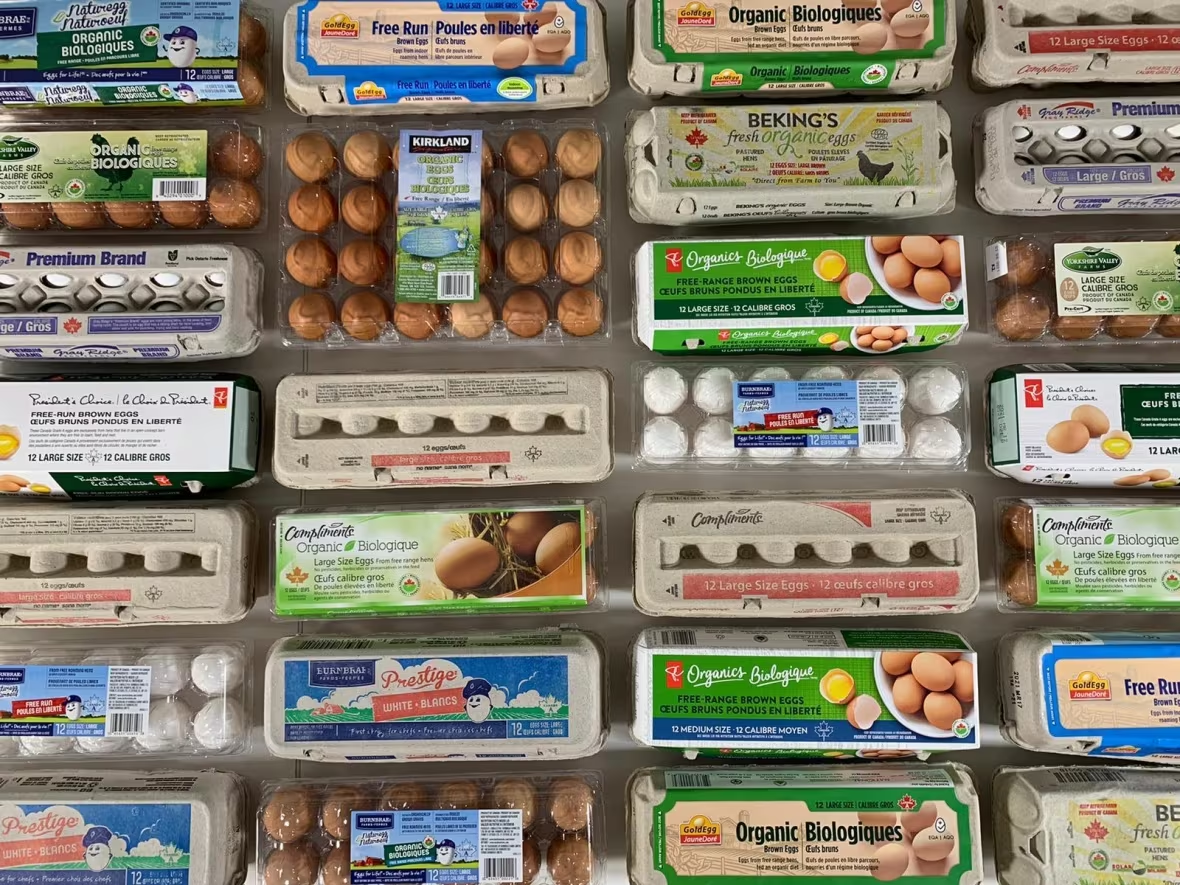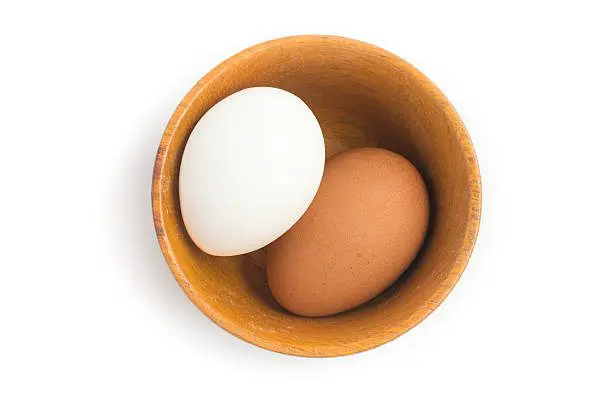Let’s Break Some Shells and Expose the Truth

Organic or not? Brown or white? Caged, pasture-raised, or free-range? Standing in front of the egg cooler at the grocery store, one might be confused about which egg carton to choose. Then, there are egg size, egg grade, price differences, and quantity per carton to consider. Most consumers, however, already know precisely what they want when they open that cooler door. As creatures of habit, we tend to make a decision and stick with it. That’s all fine and good if you made the right decision in the first place – but did you?
Today, we will attempt to provide you with valuable information that will help you make an educated decision. We will examine and compare the nutritional characteristics of these different eggs, as well as their flavor profiles and appearance.
After watching this video, you may decide to go free-range and organic. You’ve seen all you need to see, you might say. But you could be wrong. Not that free-range and organic is a poor choice, but there is a bit more information you should have before you leave. It is not necessary to watch the entire video; you’ll get the drift after a few minutes.
Nutrition Comparison
Generally speaking, the cheapest eggs in the cooler are those produced in massive poultry sheds where the chickens are caged and can barely move. They stand, eat, poop, and lay eggs without leaving the cage. We will call these ‘conventional’ eggs.

On the other end of the spectrum are eggs like those featured in the video. The Free-Range chickens that laid those eggs were probably happier, less stressed, healthier, humanely treated, and more socially acceptable.

Those eggs must surely be better for humans to consume, right?
Laboratory tests would say, “There’s not much difference.” In fact, in some cases, the conventional eggs had higher levels of some vitamins than their organic counterparts. The lab report went on to say, “I think this might clear up a lot of confusion for consumers; now we know that conventional eggs are actually able to … hold their own.” It is fair to point out that in all cases, the organic eggs did have higher omega-3 levels compared to their conventional counterparts. There was an average of 0.13 g of omega-3 per large organic egg compared to about 0.05 g for conventional eggs.

Omega-3 is an essential fatty acid that the human body can’t create on its own. The recommended daily intake levels of omega-3 are 1.1 g for women and 1.6 g for men. Yes, eggs are a source of Omega-3, but women would need to crack open almost nine large organic eggs in order to reach the recommended Omega-3 intake, and men would need a dozen. A highly detailed analysis may be found here.
Flavor Comparison
An organization called The Food Lab, took the question of flavor differences to heart. They performed extensive, controlled experiments to gather respondents’ opinions of egg flavor. They looked at:
Plain old factory-farmed eggs
Eggs with 325 mg of Omega-3 Fatty Acid per egg (not organic or cage-free)
Organic Cage-Free eggs with 200 mg of Omega-3 Fatty Acid per egg
Cage-Free eggs with 100 mg of Omega-3 Fatty Acid per egg
Organic eggs, no other specifications
Organic eggs from free-roaming, pasture-raised chickens
All of the eggs had sell-by dates within a few days of each other, which is not a definite guarantee that they were the same age, but barring any unusual packaging practices, all the eggs should have been the same age within a week or so. Their conclusion? “So the results were clear: For the best-tasting eggs, go for pastured chickens. Barring those, choose whichever eggs have the highest levels of omega-3 fatty acids. Where flavor is concerned, it doesn’t matter if the eggs are organic, cage-free, or from a cage battery.” I recommend consulting the linked article to get the full story. They did add this: “It was pretty clear evidence that as far as eggs go, the mindset of the taster has far more bearing on the flavor of the egg than the egg itself. “




Appearance
White Shell vs Brown Shell
The color of the shell does not affect the nutrient content. There is no nutritional difference between a white and a brown egg. The breed of the hen determines the color of her eggs. Chickens like the Leghorn, White Rock, and Cornish lay white eggs.
Egg White
An egg white that is thicker and more dense is preferred to a runny egg white.
Egg Yolk
A darker, orange yolk is preferred over a pale yellow yolk. Yolks in organic eggs tend to have darker characteristics and stand a bit higher.
Egg Grades
There are three consumer grades for eggs: United States (U.S.) Grade AA, A, and B. The grade is determined by the interior quality of the egg and the appearance and condition of the eggshell. Eggs of any quality grade may differ in weight (size). U.S. Grade AA eggs have whites that are thick and firm; yolks that are high, round, and practically free from defects; and clean, unbroken shells.
Grade AA and Grade A eggs are best for frying and poaching where appearance is important and for any other purpose. U.S. Grade A eggs have characteristics of Grade AA eggs except that the whites are reasonably firm. This is the quality most often sold in stores. U.S. Grade B eggs have whites that may be thinner and yolks that may be wider and flatter than eggs of higher grades. The shells must be unbroken but may show slight stains. This quality is seldom found in retail stores because they are usually used to make liquid, frozen, and dried egg products.

Size
The standard for sizing eggs in the United States is by the average weight of a dozen eggs, with each weight class having a minimum weight requirement:
- Peewee: 15 ounces per dozen
- Small: 18 ounces per dozen
- Medium: 21 ounces per dozen
- Large: 24 ounces per dozen
- Extra-large: 27 ounces per dozen
- Jumbo: 30 ounces per dozen
Conclusion:
You are now a well-educated egg shopper. We have seen that in terms of nutrition and flavor, there isn’t a huge difference in eggs. The price of a dozen eggs has a lot to do with how (and what) the chicken ate and how the chicken was treated. You will need to decide what is important to you. I hope we have ‘unscrambled’ the convolution caused by an overwhelming choice of selections and ‘cracked’ the code for deciphering what egg is right for you.


Welcome to 3-Minutes A Day University, where you can learn a little about a lot of things every day in three minutes or less. We help you expand your knowledge and understanding of the real world, and 3-MAD University is tuition-free. Our wide-ranging syllabus includes a fascinating insight into topics including Health and Medicine, Science, Sports, Geography, History, Culinary Arts, Finance and the Economy, Music and Entertainment, and dozens more. You will impress yourself, your friends, and your family with how easy it is to learn facts and perspectives about the world around you. One topic you will never find covered is politics. We hope you enjoyed the previous three minutes. If you liked this post, please pass it along to a friend.
Was this email forwarded to you? Subscribe Here.
© Copyright 2024. 3-Minutes A Day University All Rights Reserved. Unsubscribe


Carol
Thank you for unscrambling and cracking the egg dilemma.
Gotta go…time to flip my egg over.